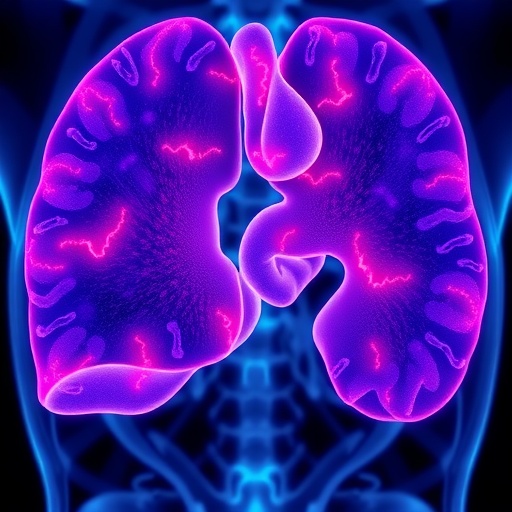In a groundbreaking study that could redefine the landscape of prostate cancer research and treatment, scientists have utilized molecular profiling techniques on ex vivo prostate cancer cancer-associated fibroblast (CAF) models. This approach has unveiled a previously unappreciated heterogeneity within the stromal components of tumors, revealing crucial drug vulnerabilities that pave the way for novel therapeutic strategies. These findings, recently published in the journal Cell Death Discovery, mark a significant stride toward personalized medicine in oncology, particularly for prostate cancer, one of the most prevalent malignancies in men worldwide.
The tumor microenvironment, often overshadowed by the cancer cells themselves, plays a pivotal role in tumor progression, metastasis, and resistance to therapy. Among its constituents, cancer-associated fibroblasts stand out as key mediators of the stromal support that tumors exploit. They remodel the extracellular matrix, secrete signaling molecules, and interact dynamically with malignant cells. However, the extent of stromal heterogeneity and its implications for treatment response have remained elusive until now.
By cultivating CAFs isolated directly from prostate cancer tissues outside the human body, researchers were able to retain the cells’ native characteristics while applying comprehensive molecular analyses. These ex vivo models provided an unprecedented window into the diverse cellular states of fibroblasts within the tumor microenvironment. Through transcriptional profiling, proteomic assessments, and functional assays, the study delineates distinct fibroblast subpopulations, each with unique molecular signatures and biological behaviors.
One of the most striking revelations is the existence of discrete CAF phenotypes, ranging from those promoting inflammation and immune evasion to others facilitating tissue remodeling and angiogenesis. These subsets were not only molecularly distinct but also exhibited differential sensitivities to various pharmacological agents. This heterogeneity challenges the traditional one-size-fits-all approach to targeting the tumor stroma, suggesting that therapeutic strategies must be tailored to the specific fibroblast landscape of each patient’s tumor.
The identification of drug vulnerabilities within these CAF subsets is particularly significant. The researchers screened a panel of compounds, including kinase inhibitors and metabolic modulators, uncovering selective efficacy against certain fibroblast populations. This opens the door to combinational therapies that disrupt the supportive stromal niches alongside attacking the cancer cells, thereby enhancing treatment outcomes and potentially overcoming resistance mechanisms.
This research also highlights the dynamic interplay between CAFs and cancer cells. By influencing tumor metabolism, immune cell infiltration, and extracellular matrix stiffness, fibroblast heterogeneity shapes the tumor’s biological behavior and response to therapy. Through molecular profiling, the study connects these functional attributes to specific fibroblast signatures, enabling more precise predictions of disease progression and therapeutic response.
Furthermore, the ex vivo models developed present a valuable platform for preclinical drug testing. Unlike conventional cell lines or animal models, these patient-derived CAF cultures maintain the complexity and variability found in human tumors. This enhances the relevance of experimental results and accelerates the translation of discoveries into clinical applications.
The implications of these findings extend beyond prostate cancer. CAF heterogeneity is a feature shared across multiple tumor types, suggesting that similar profiling approaches could revolutionize stromal targeting in a broad oncology context. The integration of molecular data with clinical parameters will be instrumental in designing next-generation cancer therapies that address both tumor cells and their microenvironment holistically.
Importantly, the study underscores the necessity for high-resolution molecular tools in cancer research. Technologies such as single-cell RNA sequencing, proteomics, and spatial transcriptomics were integral to disentangling the complex stroma. These cutting-edge methodologies allow researchers to dissect the tumor microenvironment with unprecedented detail, enabling the discovery of novel biomarkers and therapeutic targets.
The work also raises important questions about the mechanisms driving fibroblast heterogeneity. Are these phenotypes dictated by intrinsic genetic programs, the influence of neighboring cancer cells, or systemic factors such as inflammation? Future research focusing on the origin and plasticity of CAF subpopulations will be crucial for developing strategies to modulate or reprogram the tumor stroma effectively.
Clinically, the stratification of prostate cancer patients based on stromal profiles could lead to more accurate prognostic models and personalized treatment regimens. By identifying patients whose tumors harbor drug-sensitive CAF populations, oncologists may be able to tailor interventions to exploit these vulnerabilities, minimizing side effects and improving survival rates.
Moreover, this work aligns with the growing emphasis on tumor microenvironment-targeted therapies. Drugs designed to inhibit CAF-mediated signaling pathways or remodel the extracellular matrix are currently in development, and the molecular insights provided here can refine their application. Understanding stromal heterogeneity will be key to overcoming the limitations that have thus far hampered stromal targeting efforts.
The revelation of stromal heterogeneity also challenges existing paradigms in prostate cancer biology. Historically, research has predominantly focused on epithelial tumor cells, but this study clearly demonstrates that the supporting stroma is equally complex and influential. This paradigm shift could usher in a new era of oncology where microenvironmental components are afforded equal investigative and therapeutic priority.
The study’s comprehensive approach—from isolating patient-derived fibroblasts to integrating multi-omics data and functional drug screens—exemplifies the power of interdisciplinary research. It embodies how combining cellular biology, molecular profiling, and pharmacology can unravel the complexities of cancer and identify actionable targets that were previously concealed.
Taken together, these findings signify a leap forward in understanding the prostate cancer microenvironment. They provide a blueprint for exploiting stromal heterogeneity therapeutically and introduce robust models that will facilitate the discovery of next-generation cancer treatments. As research continues to delve deeper into the tumor-stroma dialogue, the prospects for combating prostate cancer with precision and efficacy grow stronger.
With prostate cancer representing a leading cause of cancer morbidity and mortality, this work stands to impact millions of patients globally. The translation of these molecular insights into clinical practice promises to enhance early detection, predict therapeutic responses more reliably, and ultimately improve patient outcomes through bespoke treatments that consider both cancer cells and their diverse stromal partners.
Subject of Research:
Article Title:
Article References:
Rantanen, F., Murumägi, A., Arjama, M. et al. Molecular profiling of ex vivo prostate cancer CAF models captures stromal heterogeneity and drug vulnerabilities. Cell Death Discov. 11, 507 (2025). https://doi.org/10.1038/s41420-025-02792-3
Image Credits: AI Generated
DOI: 06 November 2025
Keywords:




